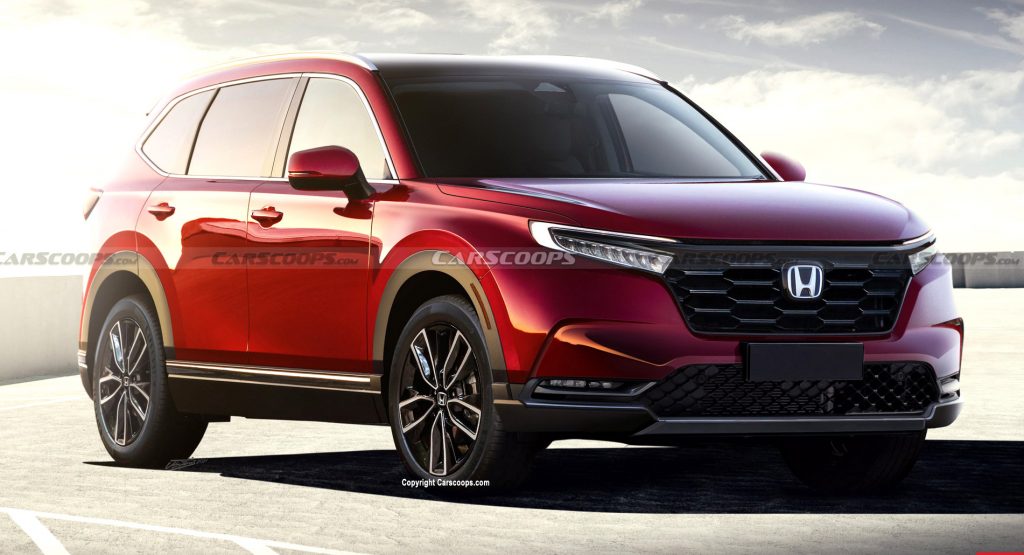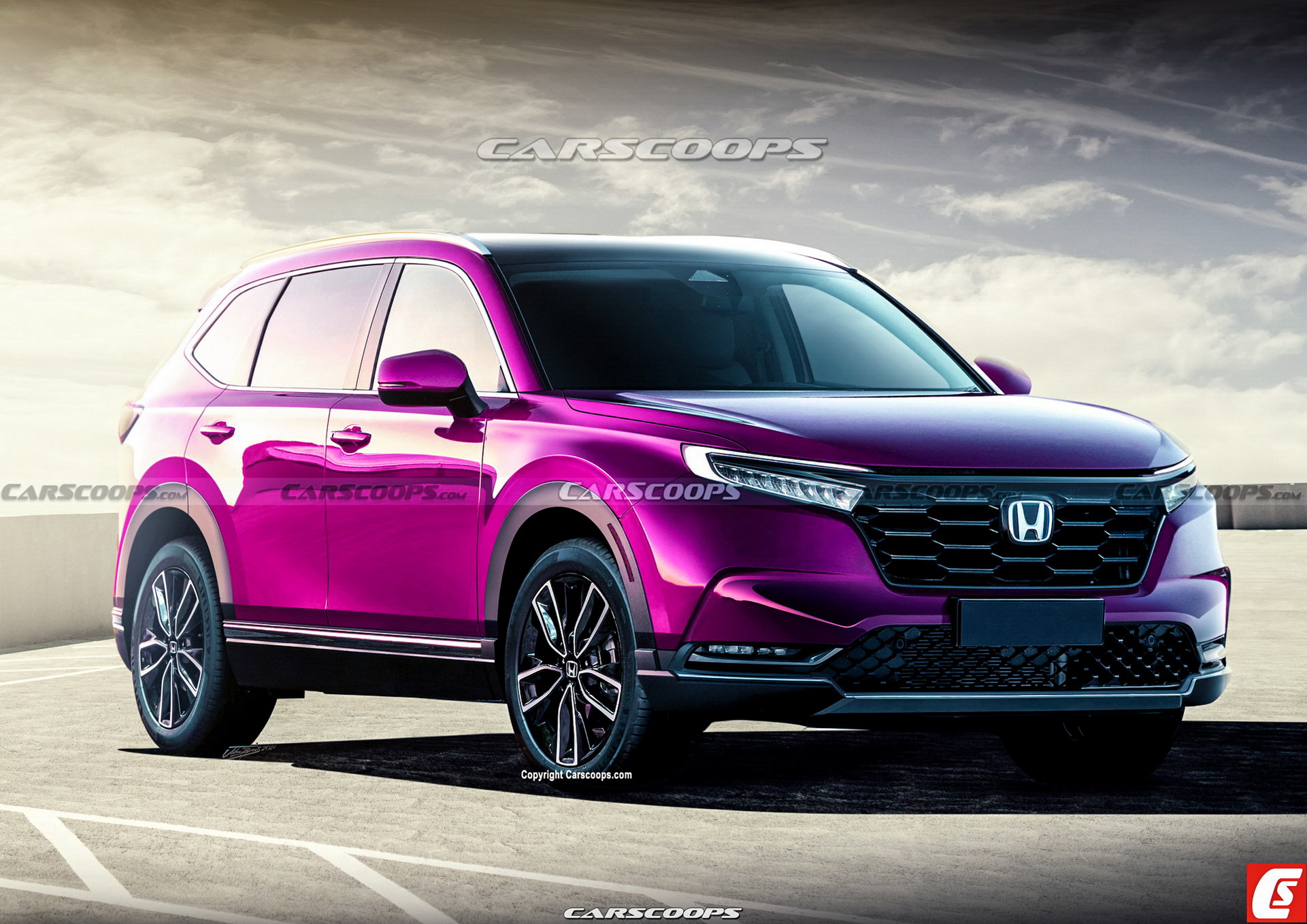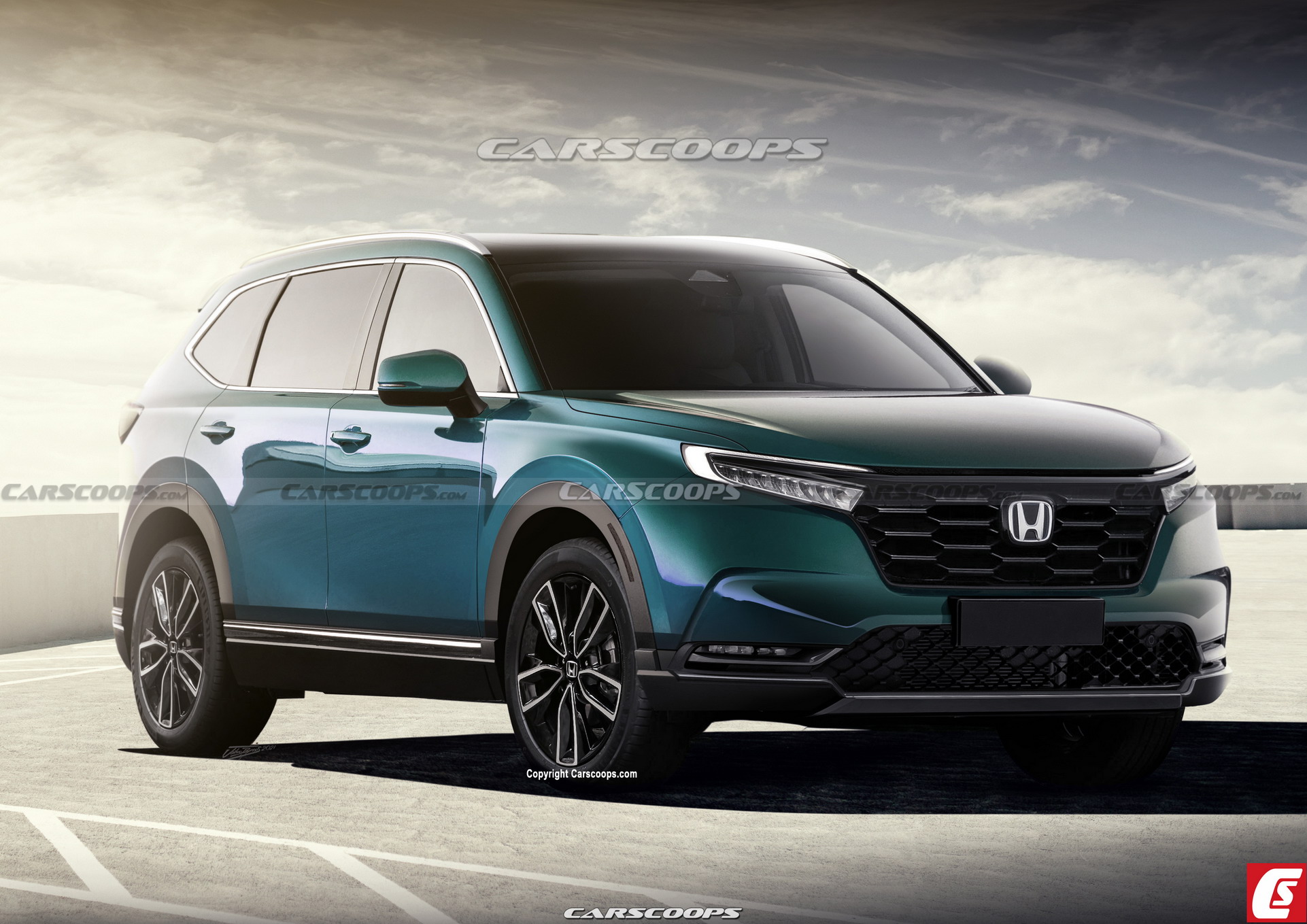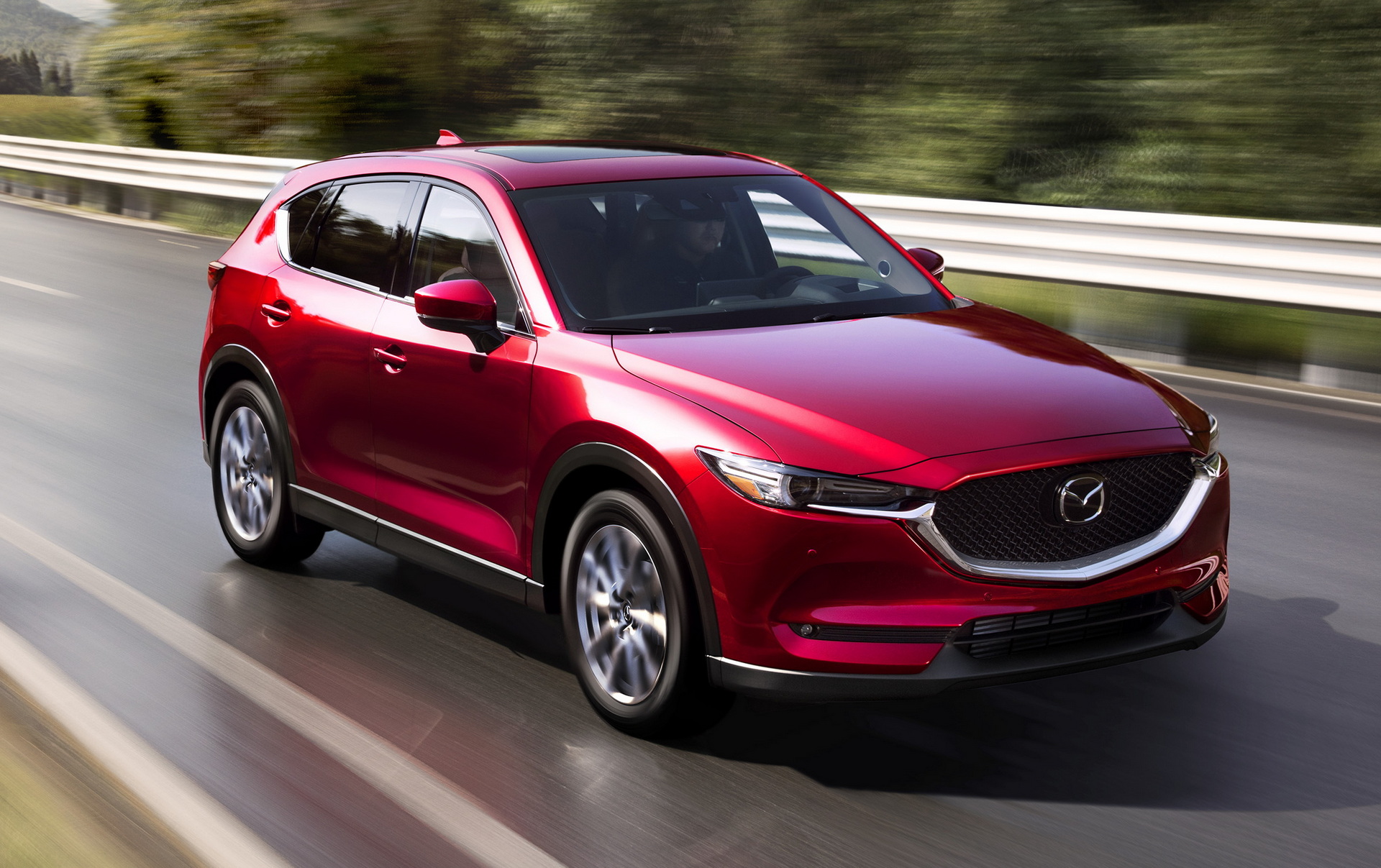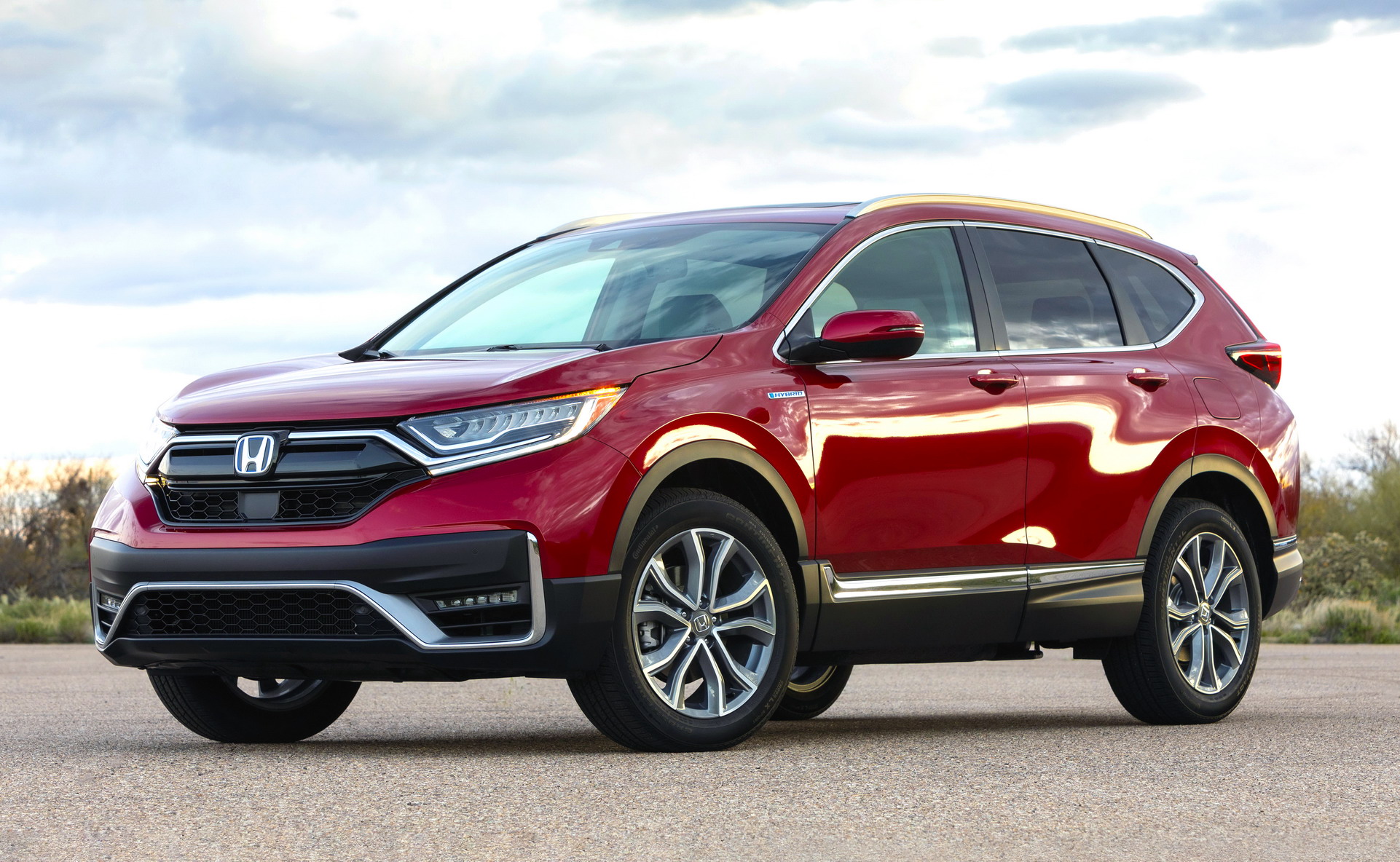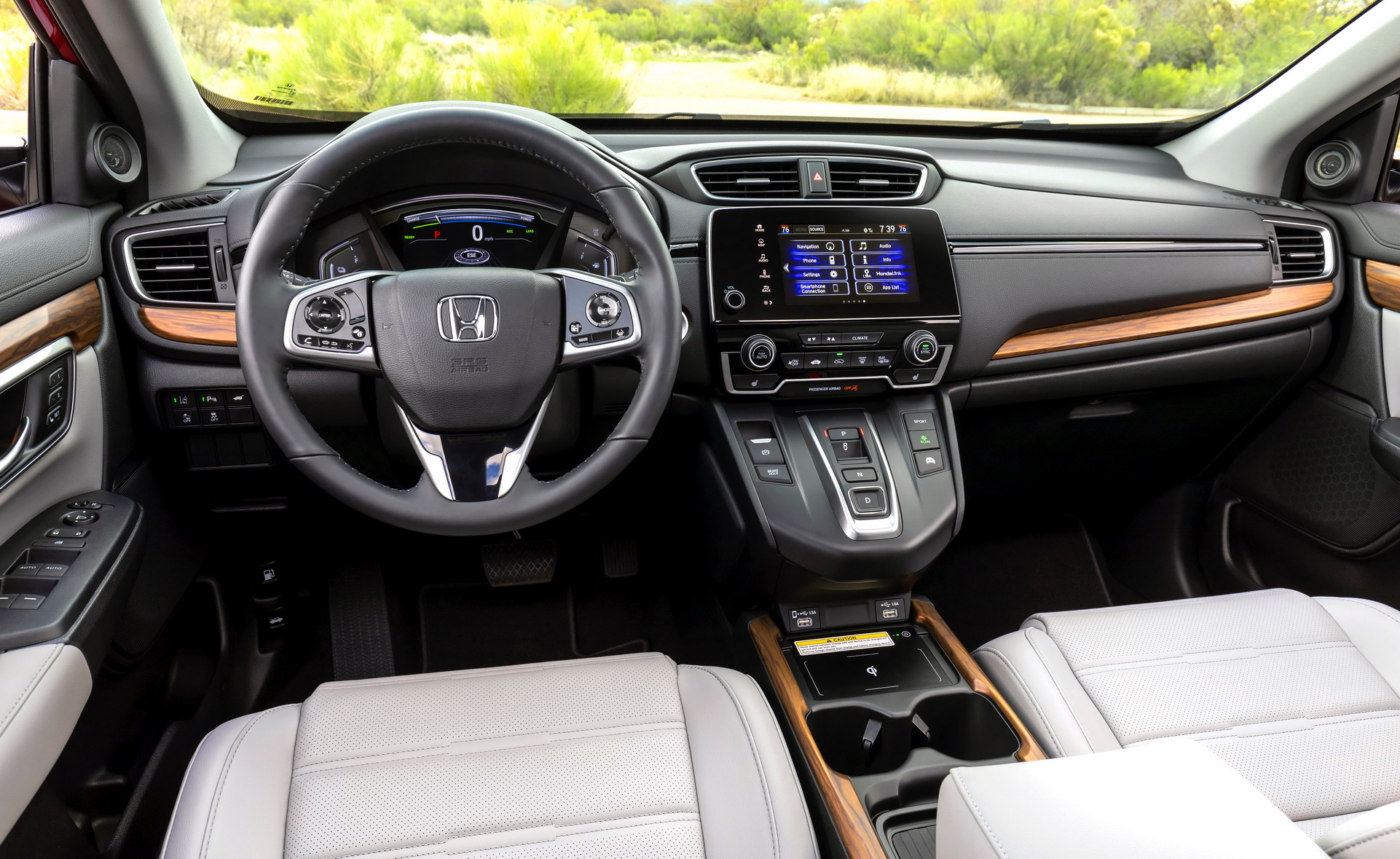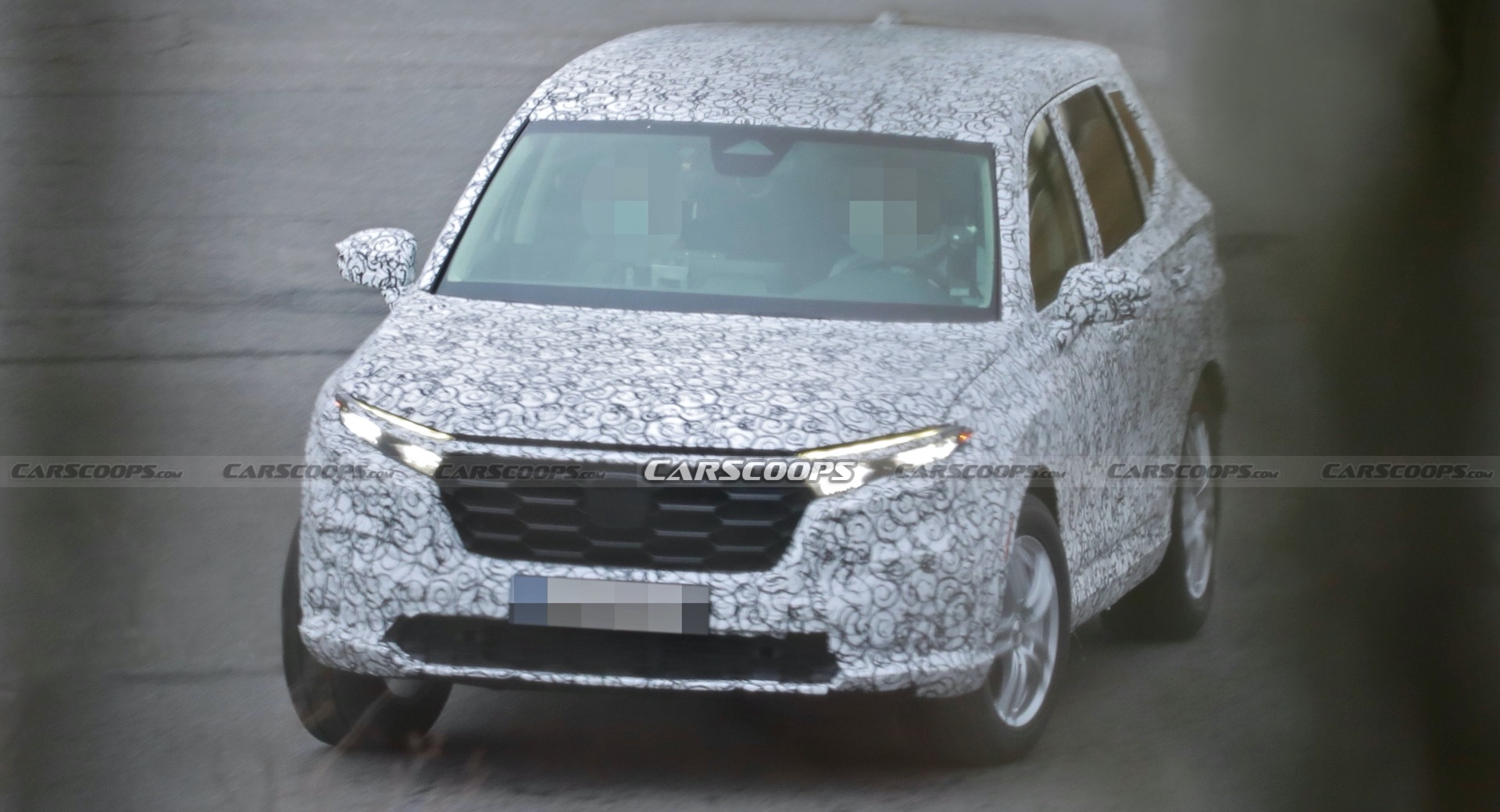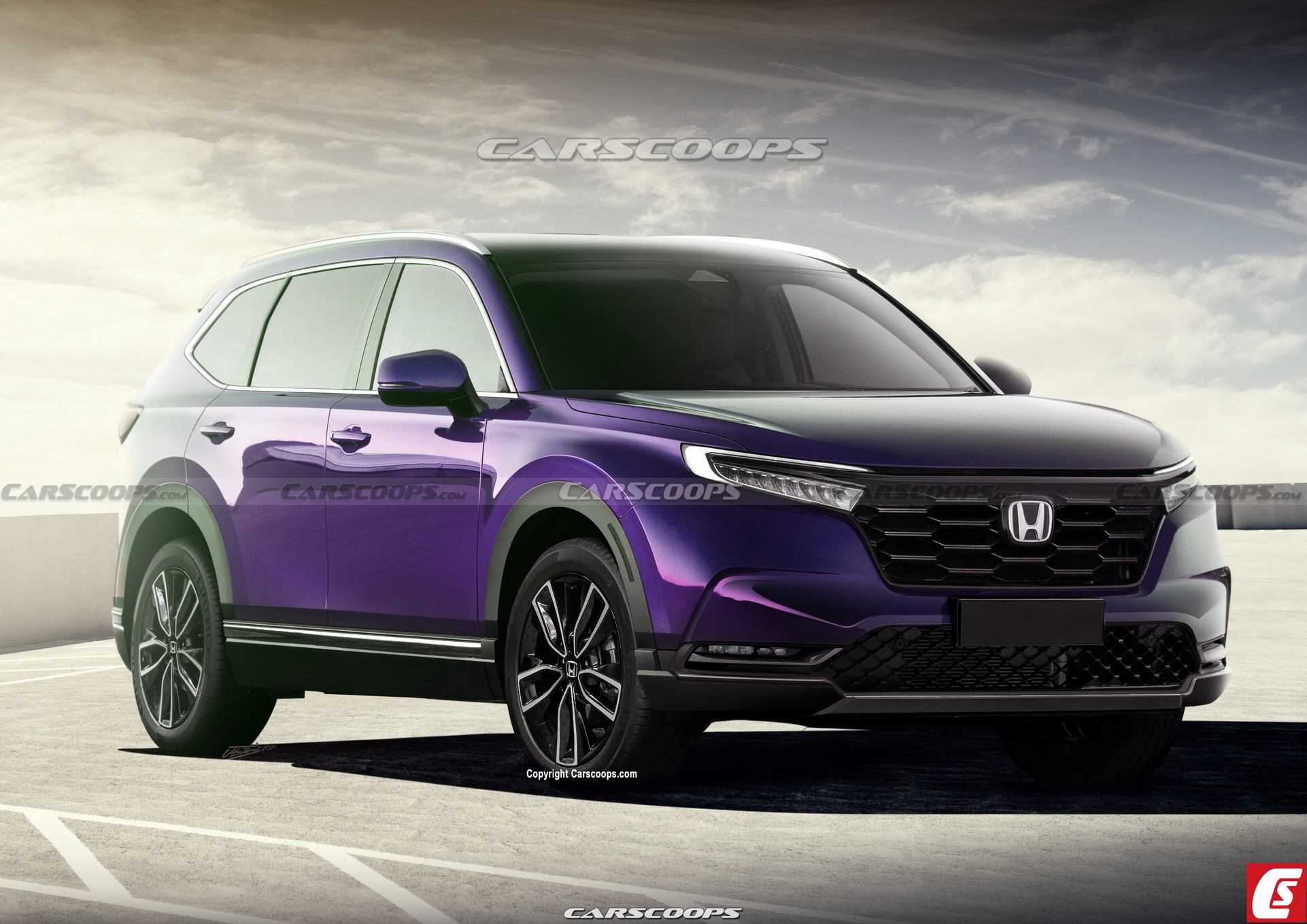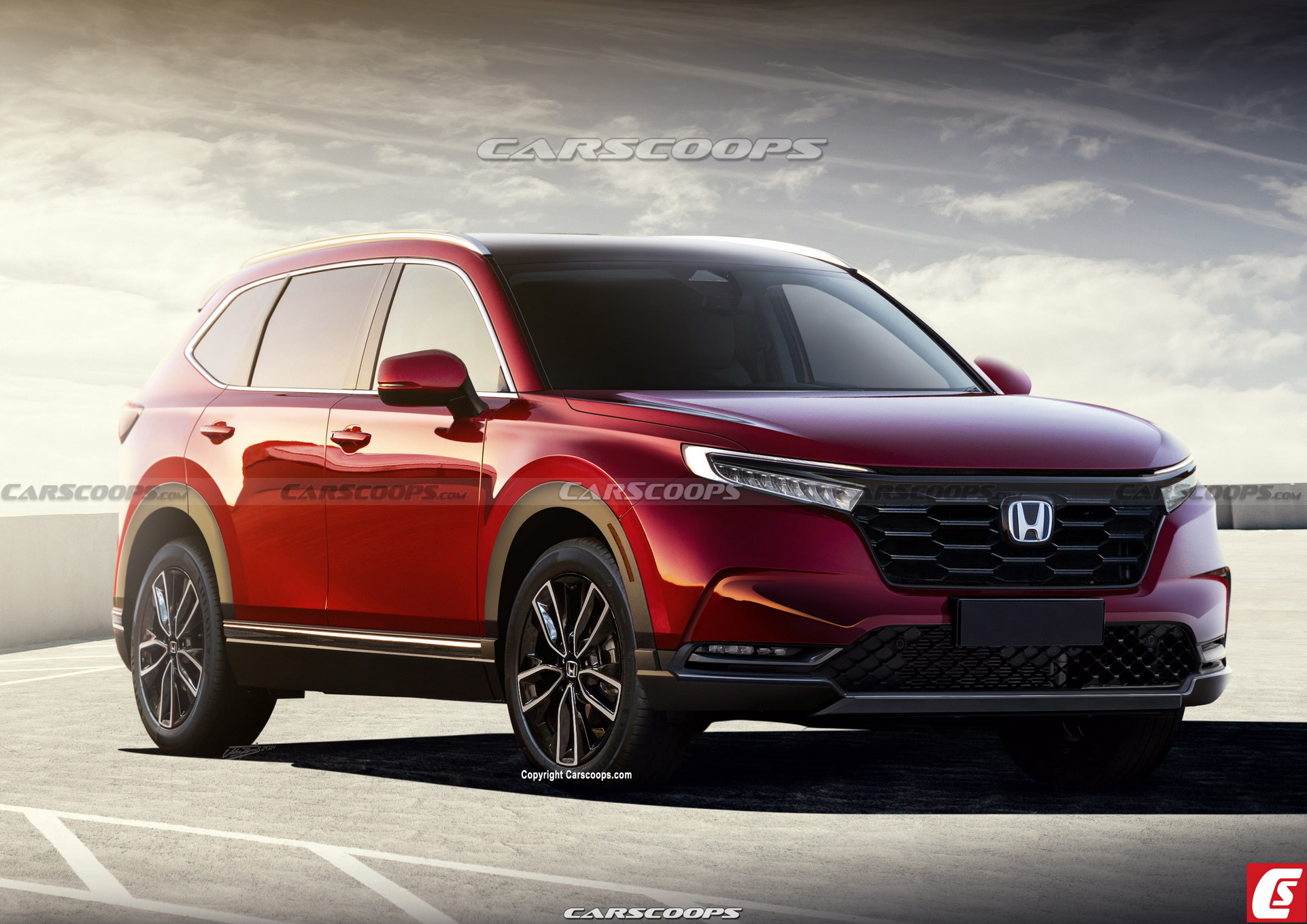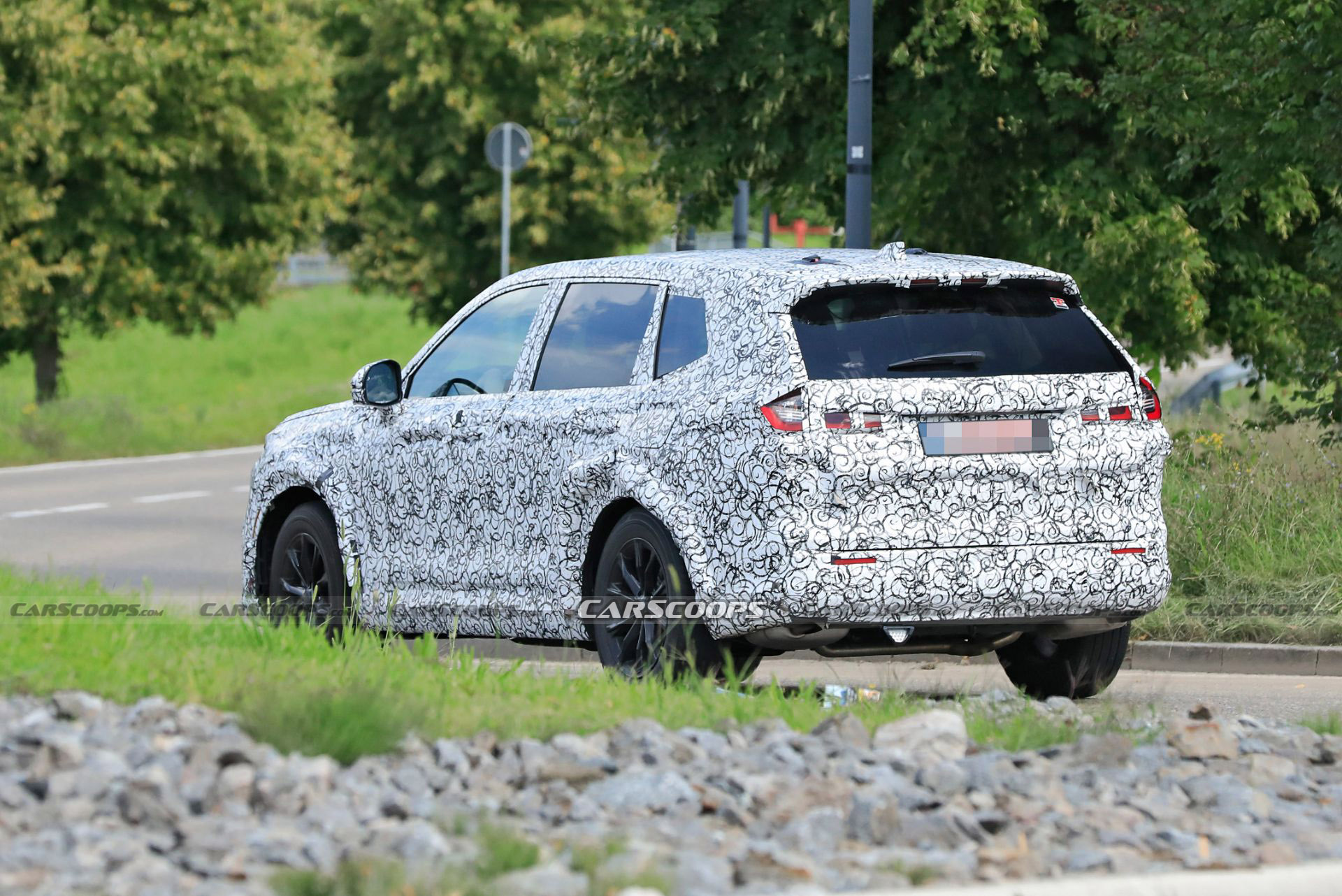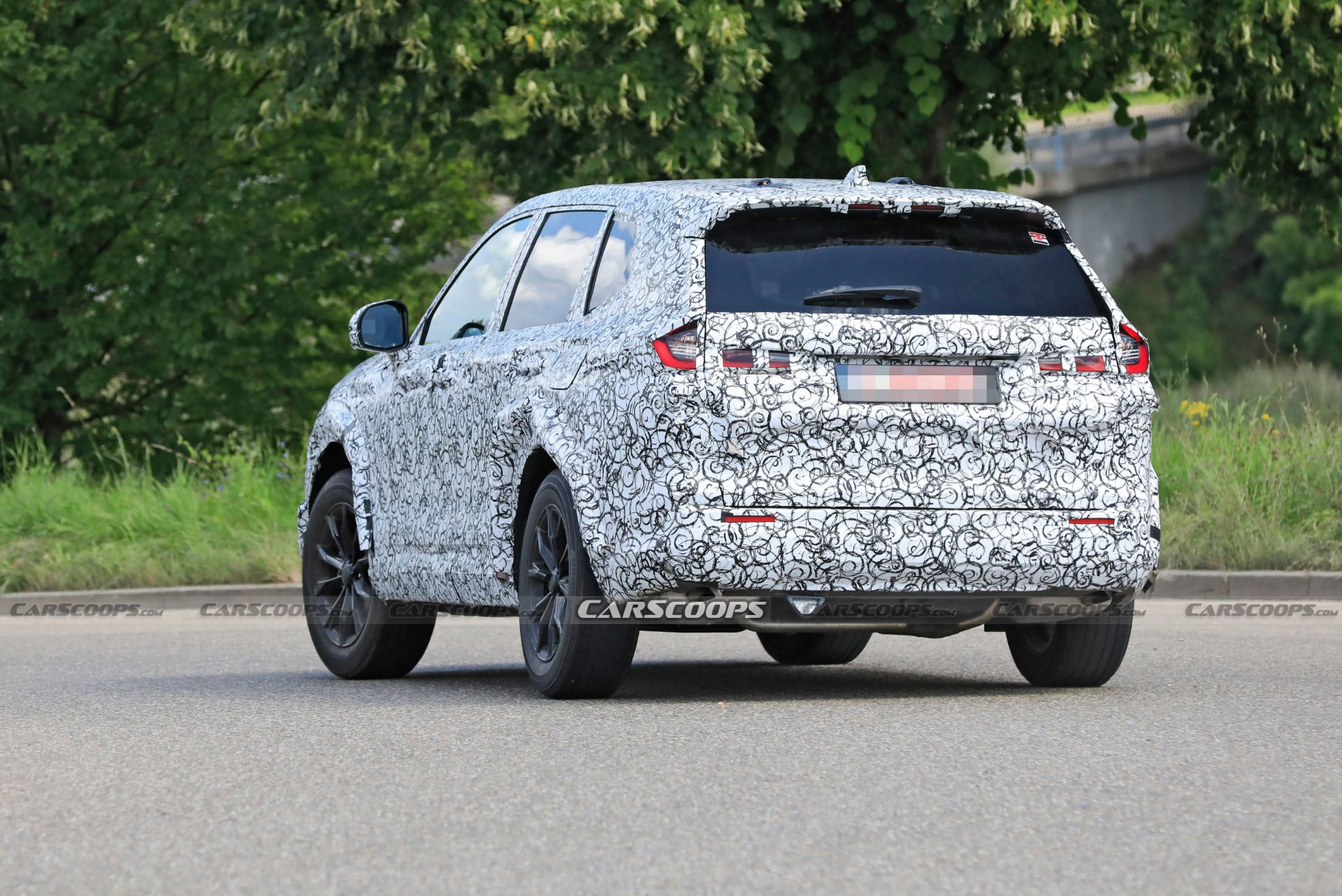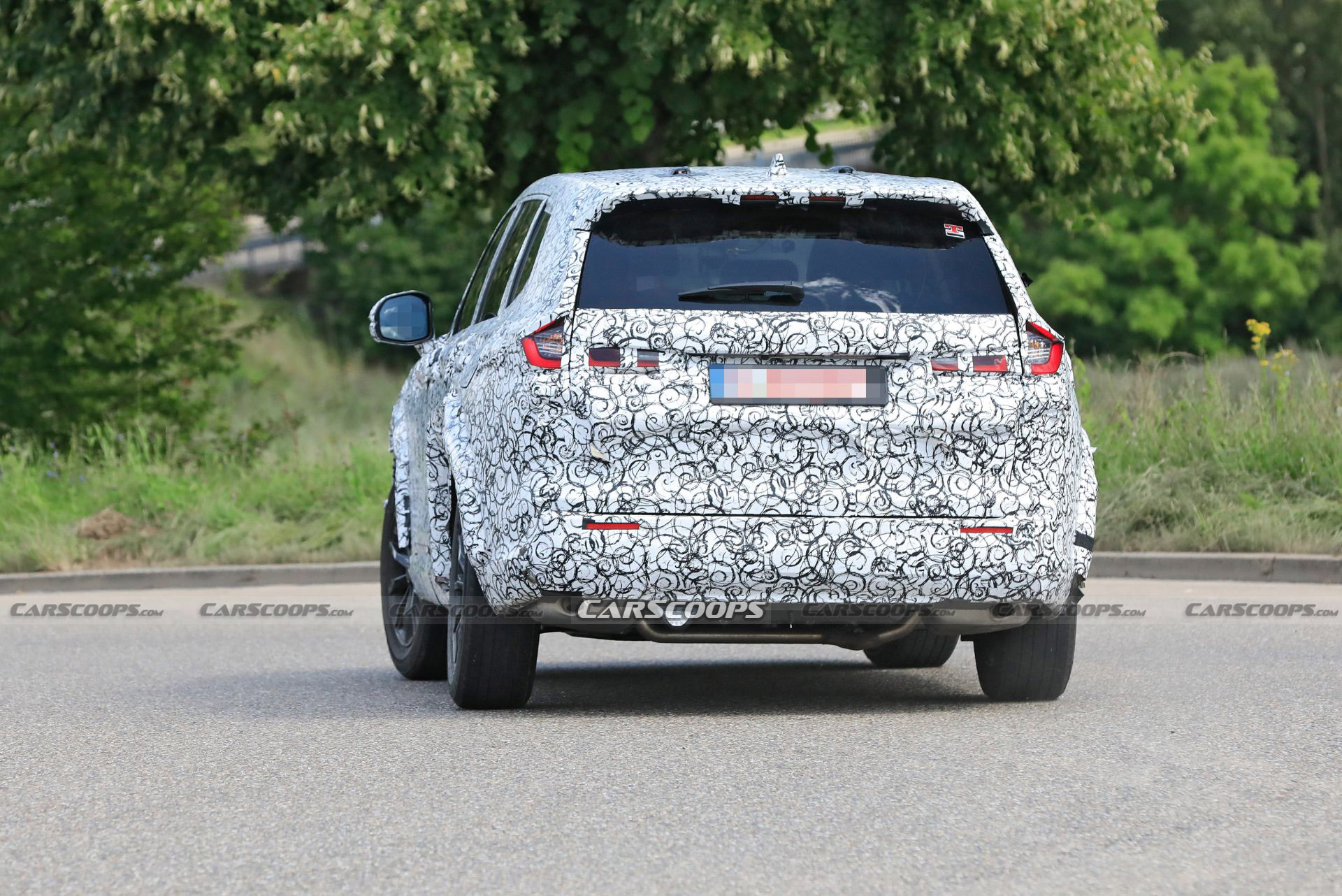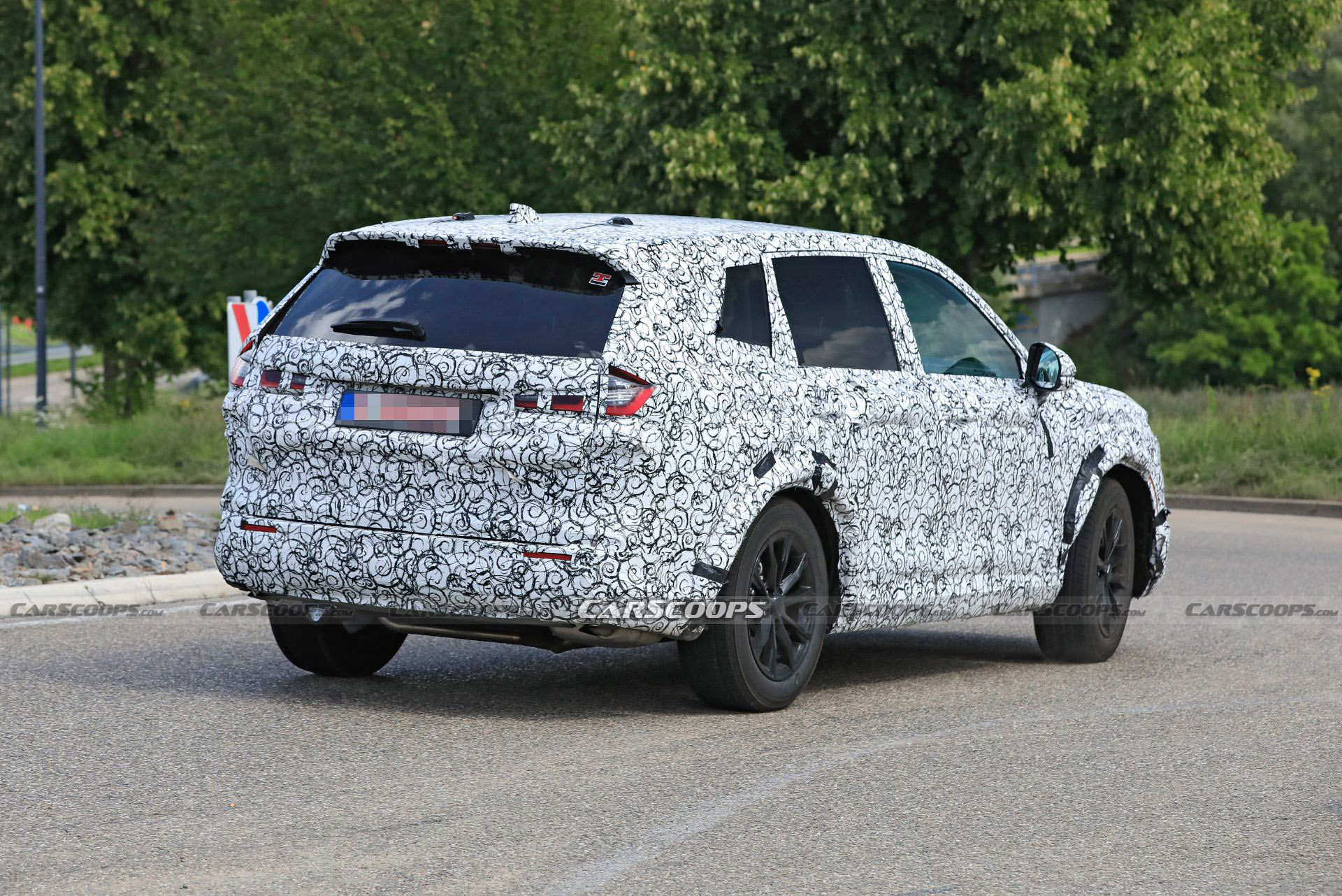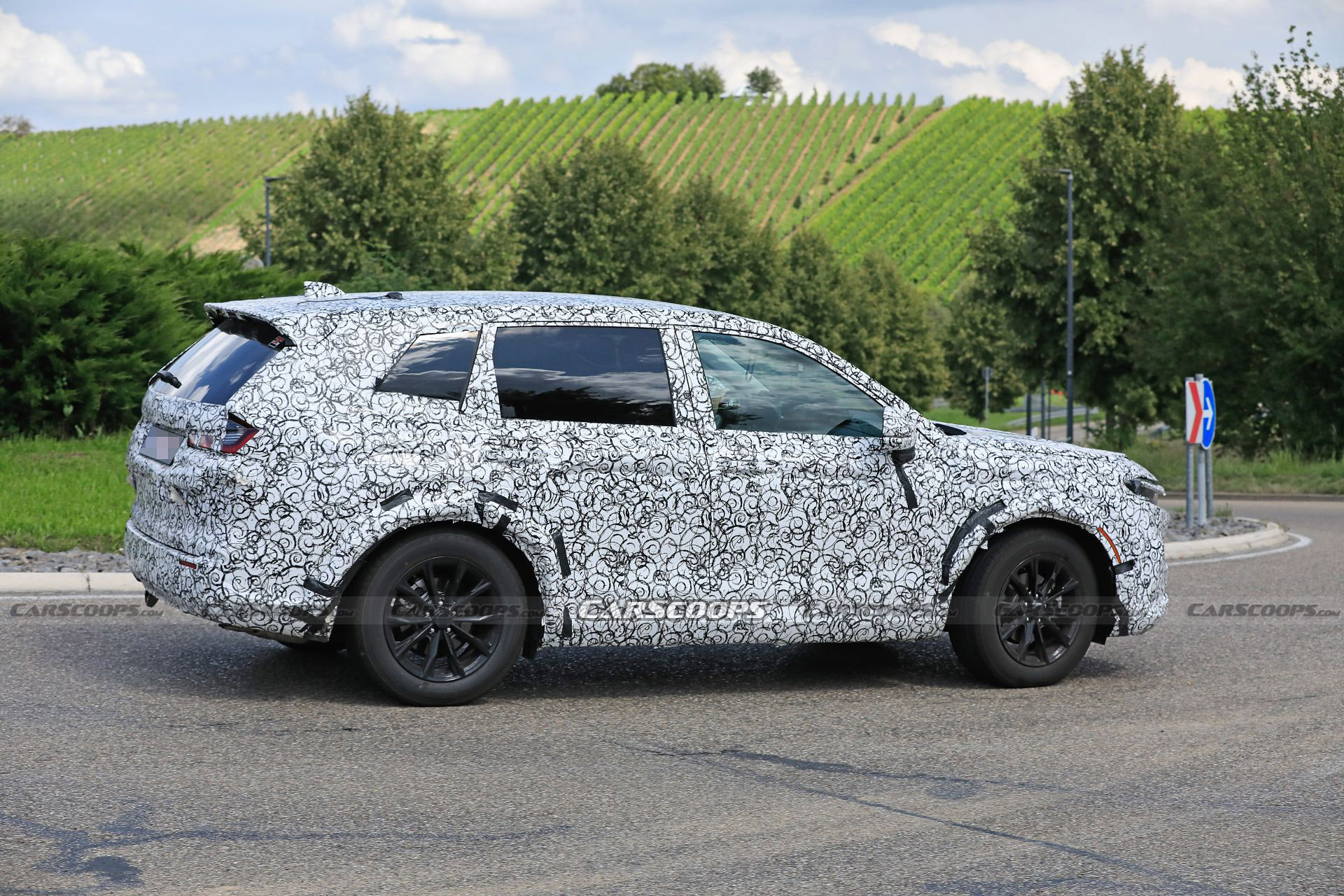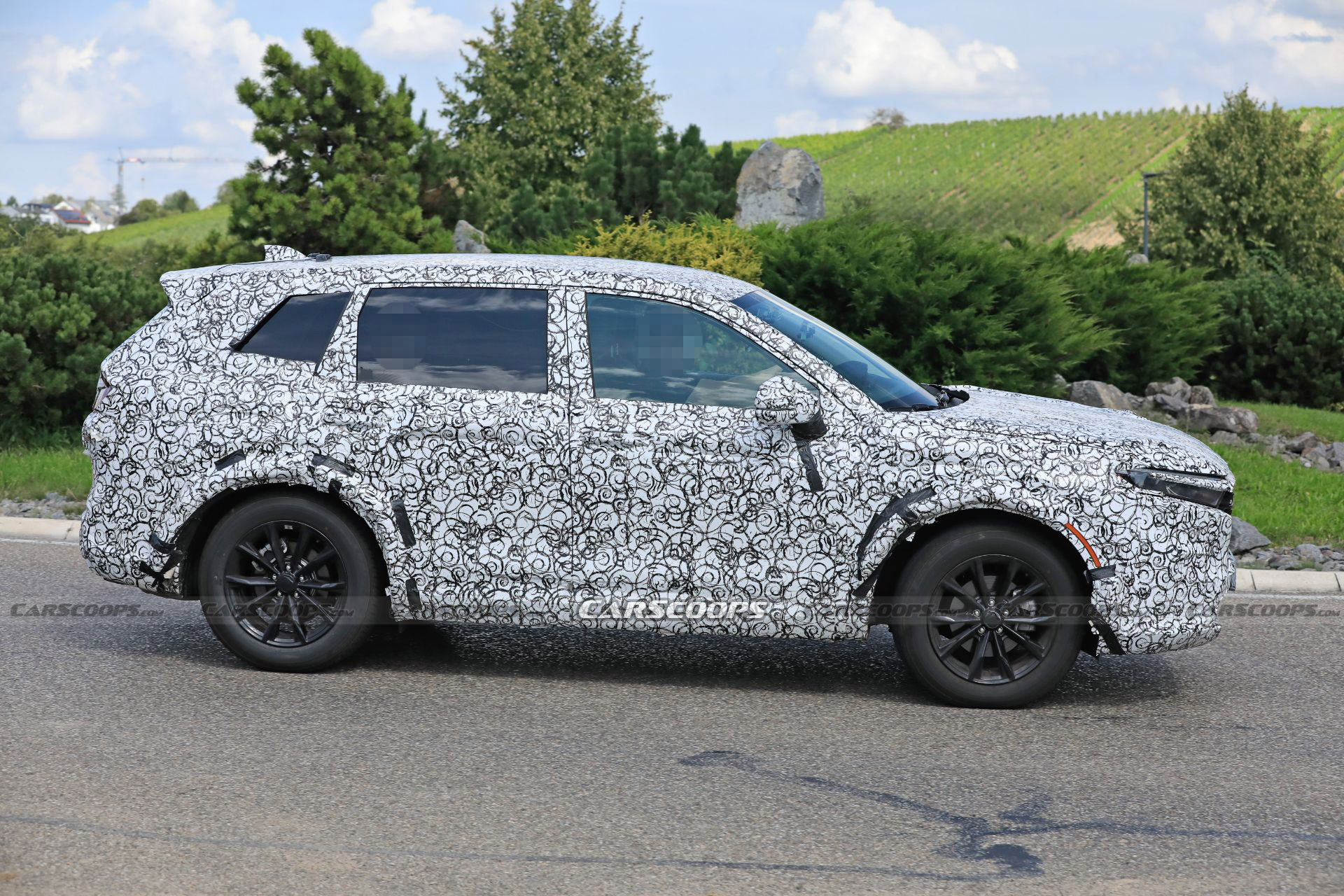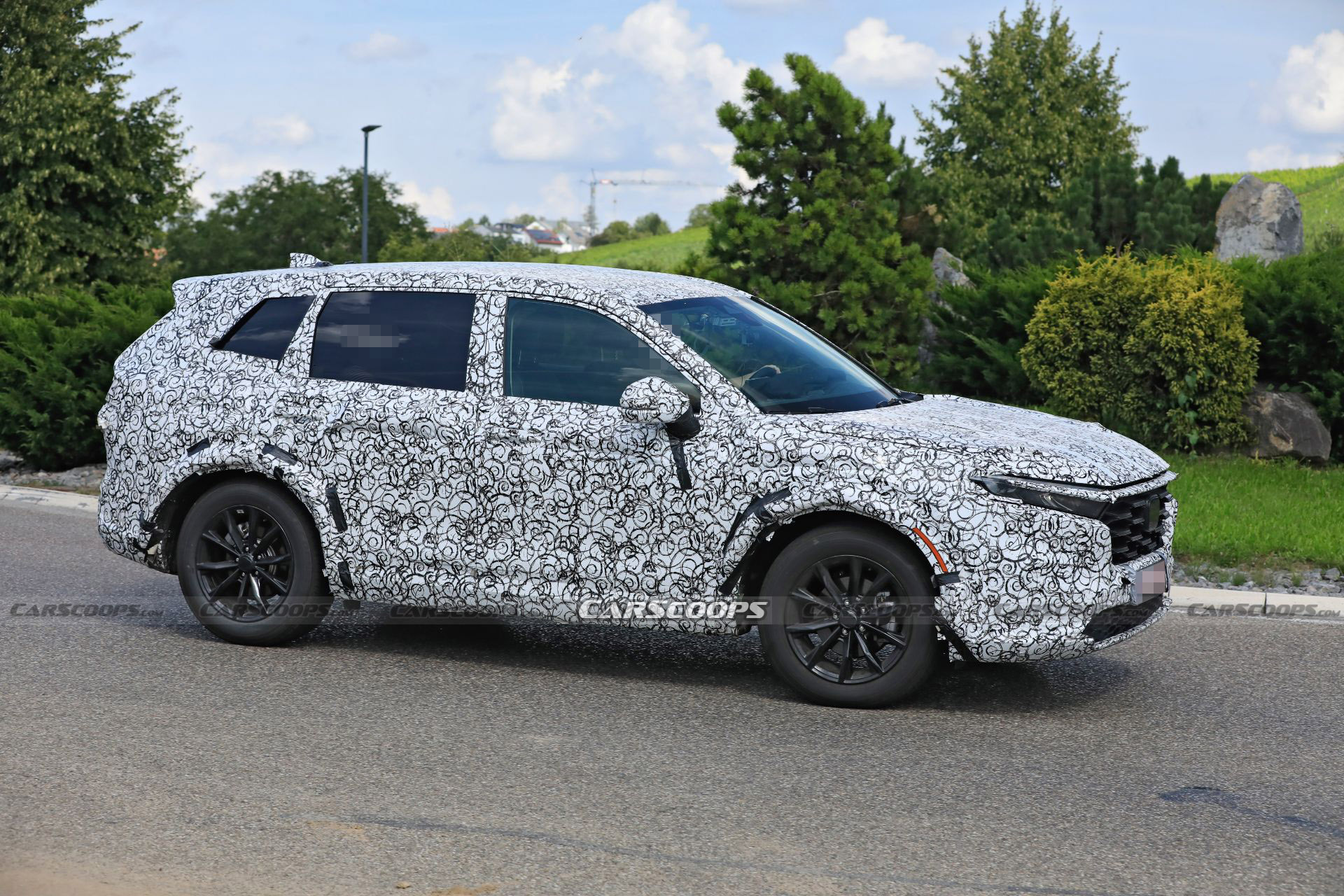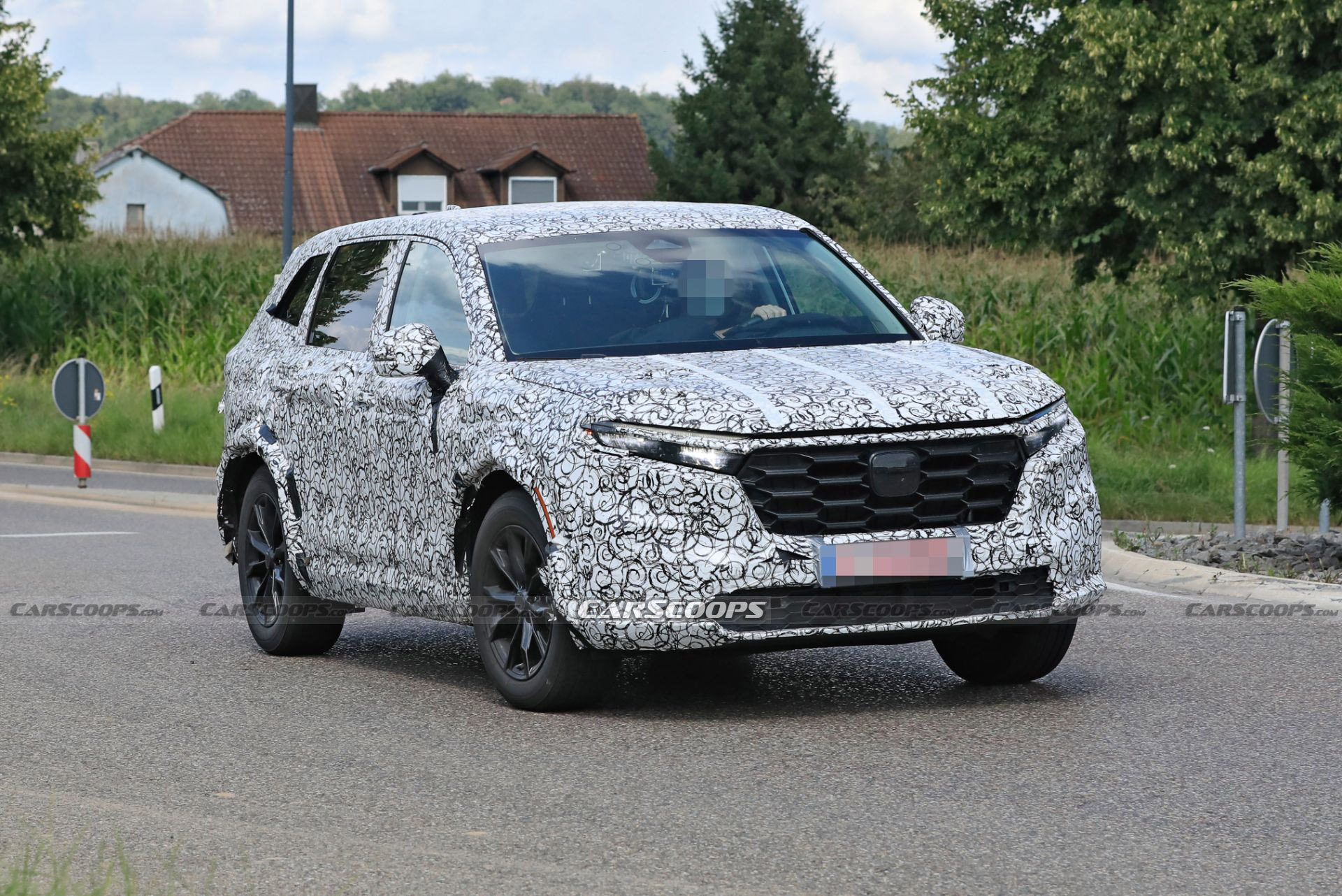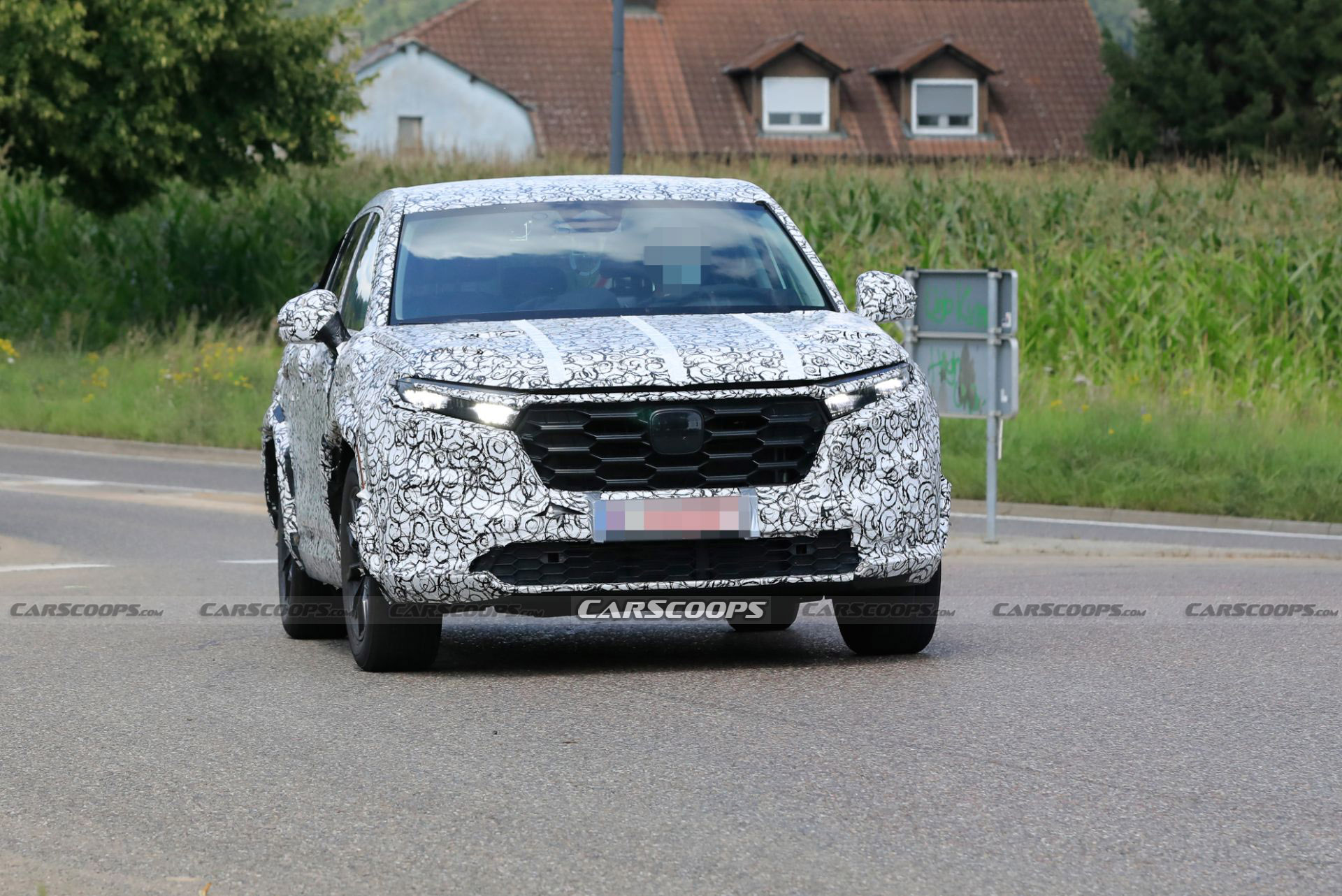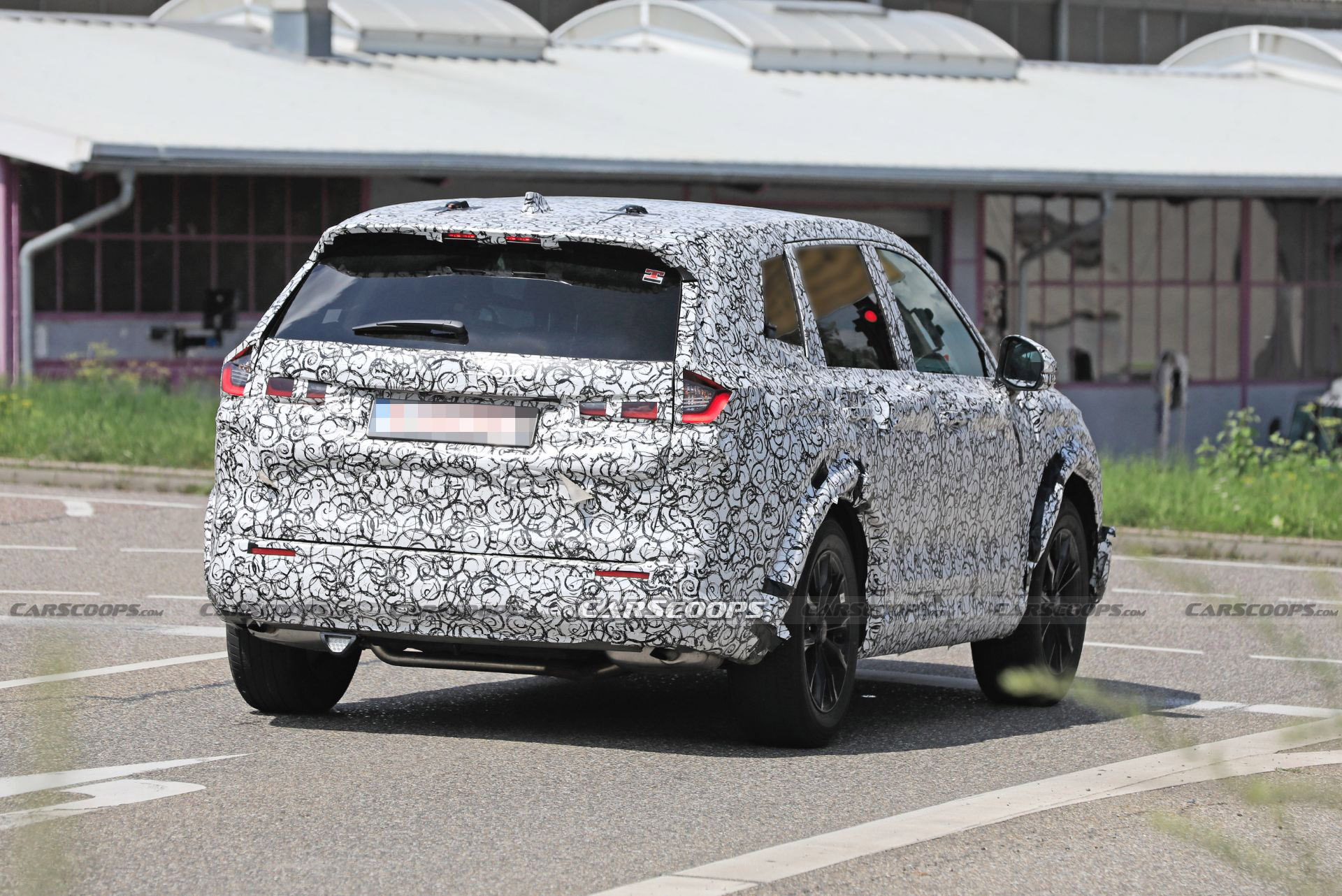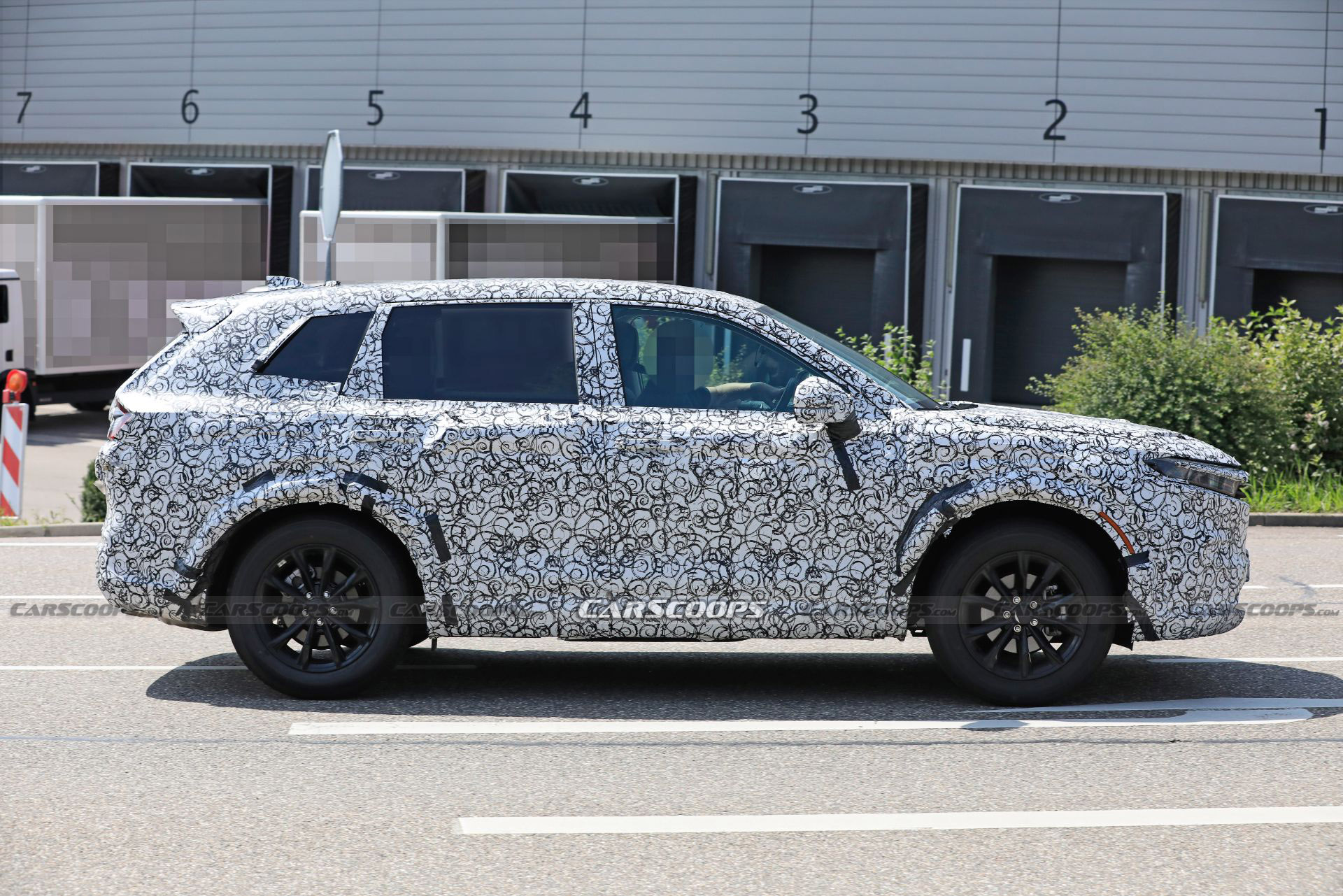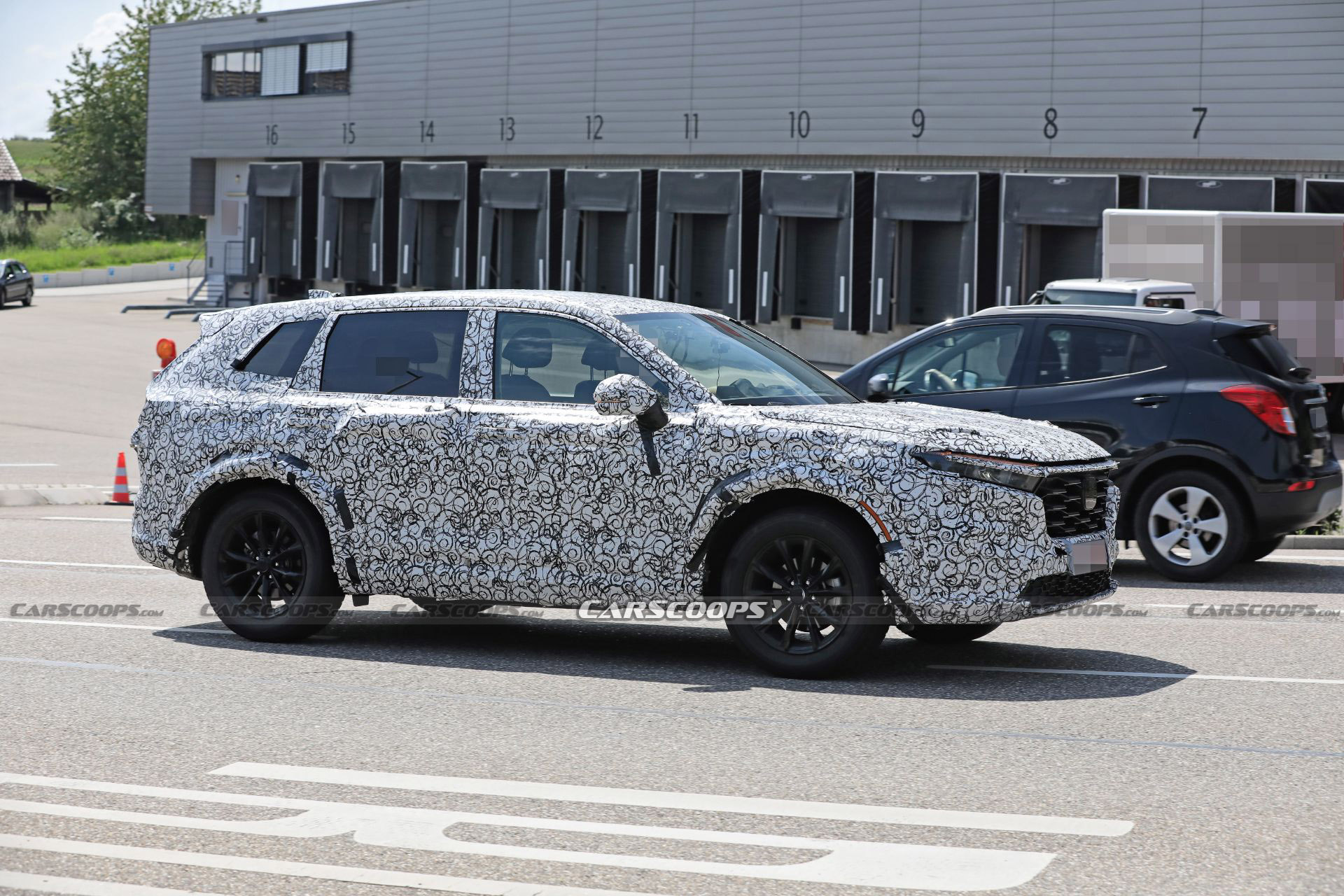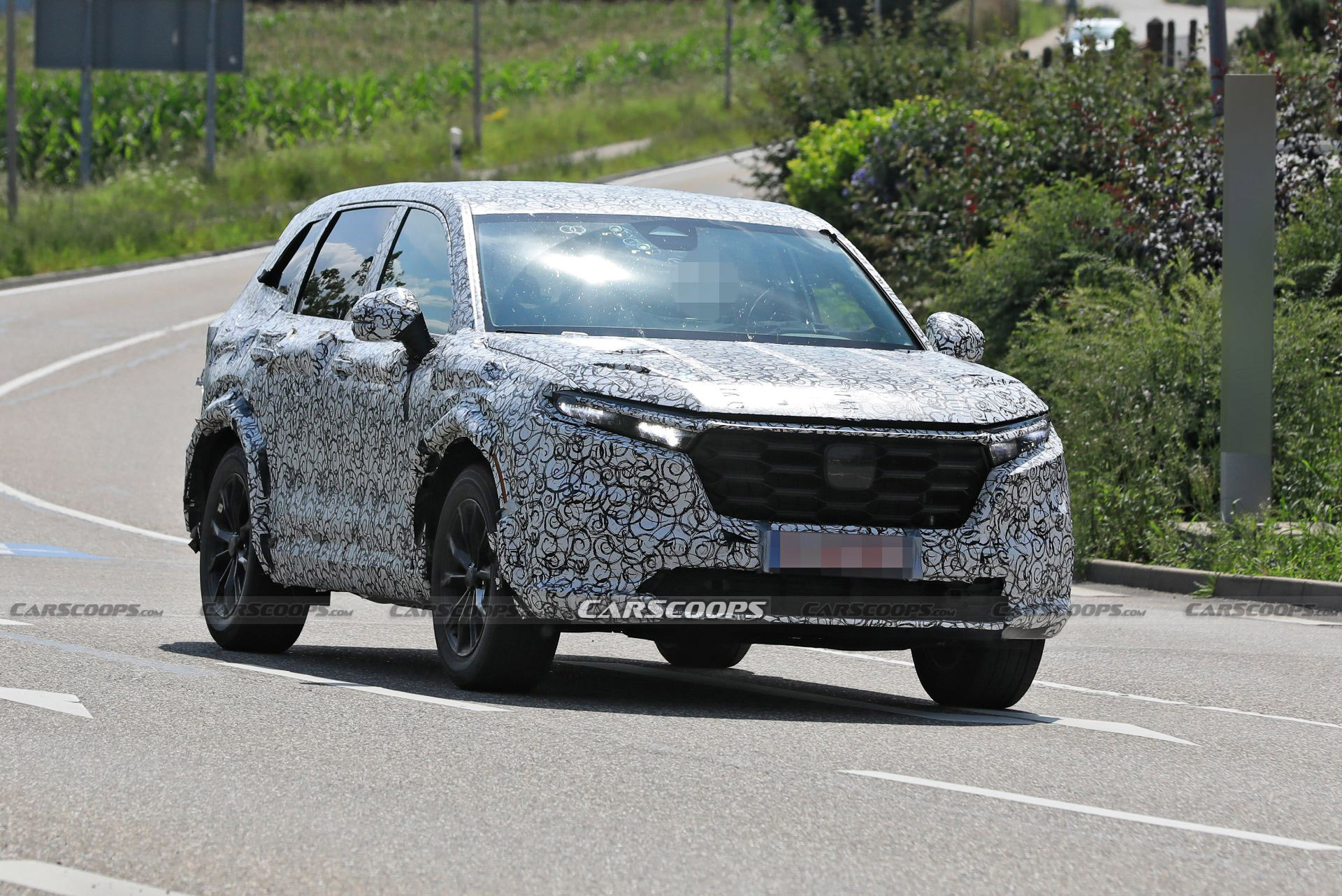This article contains independent illustrations by CarScoops’ artist Josh Byrnes based on 2023 Honda CR-V prototypes we’ve spied recently as well as our own intel. The renderings are not related to nor endorsed by Honda.
Honda’s CR-V has been the go-to choice for many families since its inception back in 1995. The ever-popular compact SUV is now in its fifth generation, with a mild facelift keeping it competitive amongst rivals from Ford, Toyota and Hyundai.
To keep things fresh, the Japanese automaker is fast developing an all-new, sixth-generation CR-V. And as our spies have revealed, Honda’s cash-cow is playing things safe with a contemporary, well-tailored but also more mature appearance, much like it did with the new iteration of its Civic compact sedan and hatchback. But what else can we expect? Will it be electrified? Let’s dig further.
More Future Cars: What We Think The 2024 Hyundai Ioniq 7 Electric SUV Will Look Like
Evolutionary Progression
You only need to look at Honda’s current lineup to see that the weird and wacky styling has been given the boot. Like the latest Civic and Accord, the CR-V exudes a more refined, mature approach to please many and offend very few.
At the front, it sports a dynamic new front fascia with a trapezoidal grille, and a horizontal spear that connects the matrix LED headlights. The longer hood emphasizes power, and the prominent fenders cement a confident stance. A crisp shoulder line connects the front and rear taillights, with the latter being sharper and more detailed in appearance.
Judging by the prototypes, the new CR-V will be longer than the current model that measures 182 in. (4,623mm) long, 73 in. (1,855mm) wide and 67 in. (1,690mm) tall and is riding on a 104.7 in. (2,660mm) wheelbase. The rear overhang also appears to be longer, which in combination with the other changes, alters the crossover’s proportions compared to the fifth-gen model.
A Premium Outlook
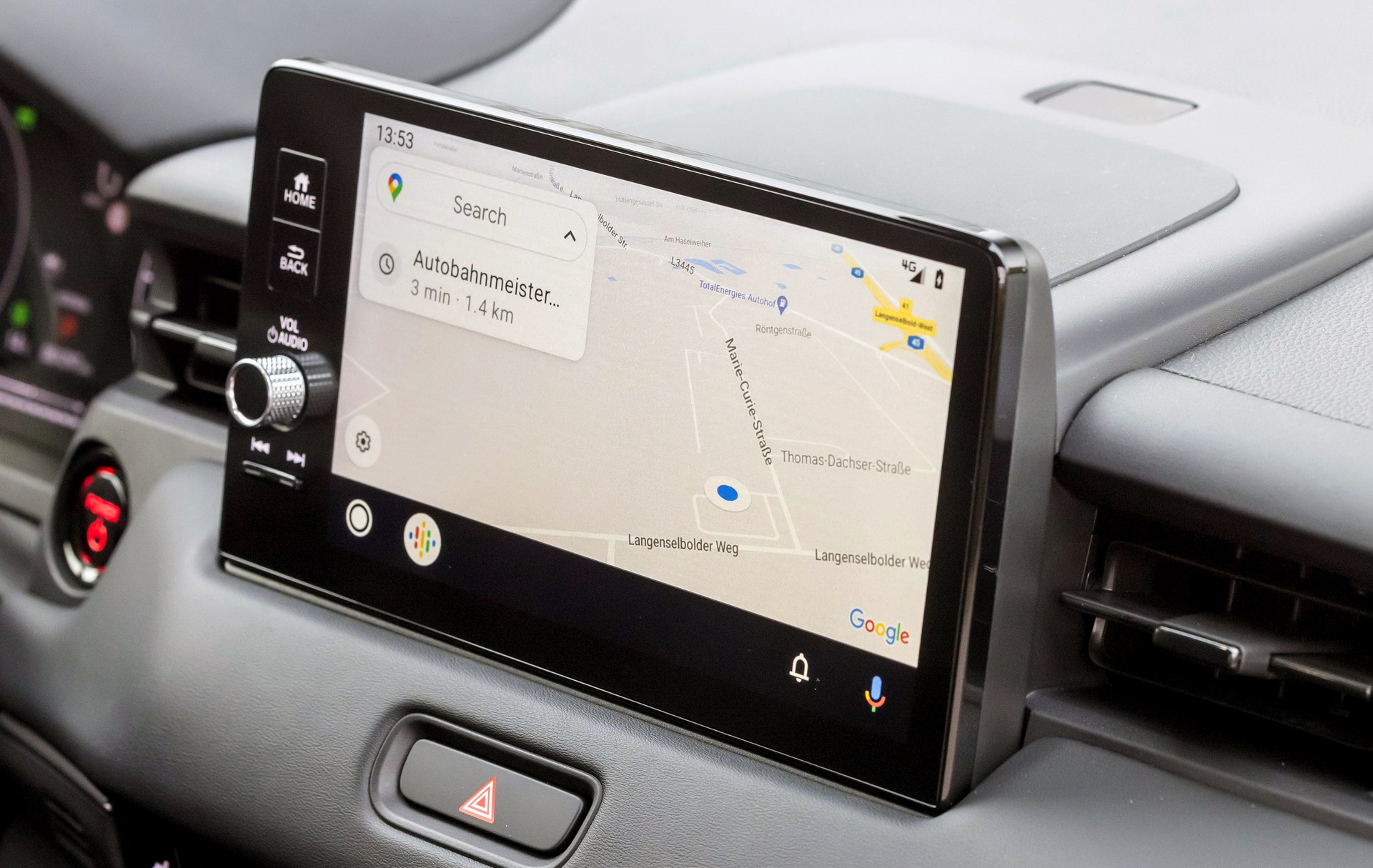
Honda has said that future models will launch with Google built-in starting in the second half of 2022. Here we see the European market HRV e:HEV’s infotainment screen
Honda rarely makes a dud for interiors, and the new CR-V will be no exception. Thanks to a bump in exterior dimensions, it will feature a roomier cabin with improved materials, minimalist styling and potentially a three-row, seven-seat variant.
Read: 2023 Honda CR-V Spied Showing Larger Body With More Mature Styling
The dash will have a larger tablet infotainment display with wireless Apple Carplay and Android Auto, wireless charging and WiFi hotspot capability. In September, Honda confirmed that it is working with Google to integrate the latter’s in-vehicle connected service into an all-new model that will come to market in the second half of 2022 in North America, and which is believed to be the CR-V. Key functions of this system include Google’s Voice Assistant installed to the on-board Display Audio, integrated Google Maps and in-vehicle Google Play apps.
A digital key will be offered for the first time on a CR-V. Honda’s Sensing suite of driver aids, which includes lane-keeping assist, dynamic cruise control, traffic sign recognition and advanced omnidirectional autonomous emergency braking, will be standard.
Powertrain Thrift
From the outset, the new CR-V will not be a dedicated battery-electric vehicle. However, it could offer plug-in hybrid capability under the e:PHEV banner to compete against Toyota’s RAV4 Prime and Ford’s Escape PHEV. One option could be to use the Clarity PHEV’s 1.5-liter Atkinson cycle four-cylinder gasoline engine paired to an electric motor for a combined 212 hp, but Honda may also have something entirely different under its sleeve.
What’s certain is that the Japanese company will once again offer a self-charging hybrid. As with the current model, this variant will use a 2.0-litre Atkinson-cycle, four-cylinder gasoline unit mated to an electric motor delivering 212 hp. Power will be fed to the front wheels or all four via Honda’s e-CVT transmission.
The same applies to the base models powered by a 1.5-liter turbocharged inline-four engine hooked up to a CVT in both FWD and AWD layouts that’s carried over from the current CR-V.
Rivals, Reveal And Prices
Honda has cemented the CR-V as one of North America’s best-sellers, with only Toyota’s RAV4 beating it in the midsize SUV sales charts for 2021. Other worthy rivals include Nissan’s Rogue/X-Trail, Mitsubishi Outlander, Mazda CX-5, Kia Sportage, Hyundai Tucson, Chevrolet Equinox, Volkswagen Tiguan and Subaru Forester.
Also Read: Used 2018 Alfa Romeo Stelvio Or 2018 Honda CR-V; How Safe Do You Play When Buying Your Next Car?
An official reveal in production-ready or near-production ‘Prototype’ form should occur within the next six months, with sales to start in the second half of 2022 as a 2023MY. While it’s too early to speak about pricing, the new CR-V shouldn’t stray too far away from the current model’s MSRPs that range from $25,750 to $36,750 in regular and hybrid flavors, though a PHEV addition would cost a bit more.
What are your thoughts on the next CR-V? Has Honda played it too safe? We’d love to hear your views in the comments below.




